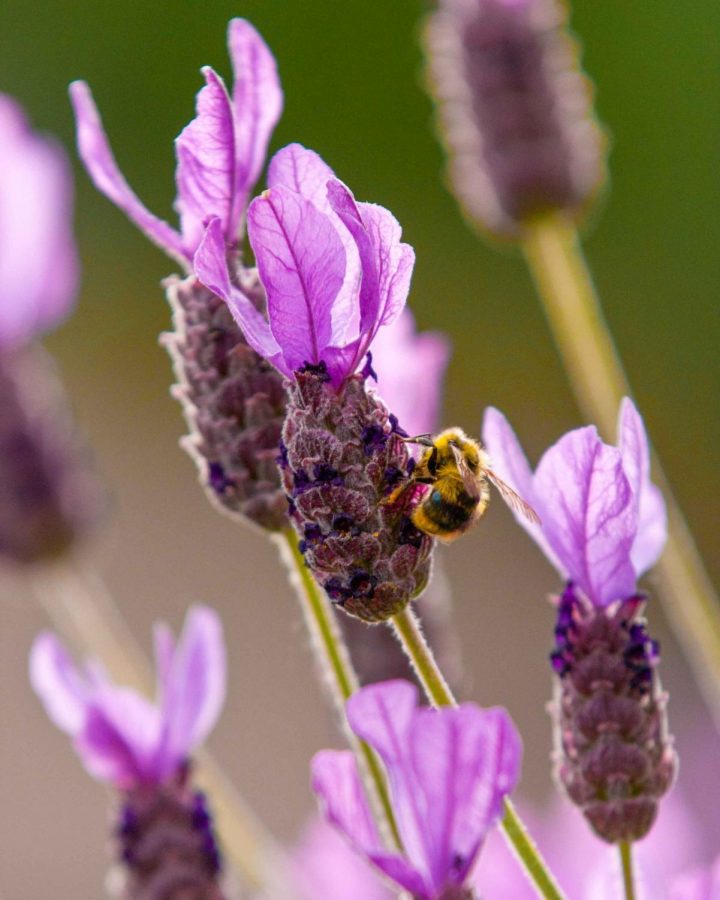‘Bee Safety’ application seeks to protect bees
April 25, 2016
A smartphone application entitled ‘Bee Safety’ has been released by the Oregon State University Extension Service to help farmers and beekeepers keep bees safe from pesticides used in agricultural work.
The app utilizes research information from a 2013 publication from OSU entitled ‘How to Reduce Bee Poisoning from Pesticides,’ that provides toxicity ratings for 150 common agricultural pesticides, as well as tips for preventing poisonings and the symptoms of bee poisoning.
“The app is based on the preexisting publication” said the publications lead author, Ramesh Sagili, an entomologist and bee researcher at OSU. “It’s a smartphone world, so the stakeholders, the beekeepers and the growers, have been asking us to come up with an app that can be utilized in the field.”
Bee Safety is an essential component to agriculture in the Pacific Northwest. According to the Bee Poisoning publication, “Beekeepers in California and Pacific Northwest preform nearly half of the nations commercial pollination, valued at $18 billion dollars.”
Accord to Sagili, in Oregon alone there are about 70,000 commercial honey bee hives that pollinate 50 Oregon crops.
“There is such a diversity of crops in the Willamette Valley and in the Pacific Northwest, we got different things like berries, cherries and apples, pears, in central Oregon we grow a majority of hybrid carrot seed for the world and bees are essential to that,” said bee expert and toxicologist at Oregon State, Louisa Hooven.
Pesticides can have many negative effects on bee populations in the Northwest if not managed properly including excessive death of bees, lack of foraging or defense, hives that lack development and even queenless hives, according to the publication.
Honey bee population has been in decline for many years. According to a Greenpeace report, 40 percent of commercial honey bees have been lost in the U.S. since 2006 and 45 percent have been lost in the U.K. since 2010.
“There are multiple factors that are contributing to higher losses of honey bee colonies, however the other native bees are still there,” Sagili said. “Bees have their own problem with pests, nutrition, and lack of habitat. Pesticides are a significant stress but it is unfair to say just because of pesticides all bees are declining.”
The app came about with the 2013 revision of the Bee poisoning safety publication that was originally published in 2006. The revision was needed due to the fact that many new pesticides had been introduced to the agricultural market and the effects on bee populations wasn’t always apparent with the information on the label.
“We looked at all the pesticides that were used on pollinated crops in the Pacific Northwest and tried to narrow it down to the ones that were used while bees were pollinating,” Hooven said. “We had to reformat it since it was based on the information that was available at the time, the information on the newer pesticides was spotty.”
The pesticide guide accounts for residual toxicity, or how long the harmful effects persist where it is sprayed, something the U.S. Environmental Protection Agency, the source of pesticide warnings, does not test for.
This required additional research on the toxicology of the pesticides as well as collaboration with the University of Idaho and Washington State University who all worked together to publish the document.
Both Hooveman and Sagili agree that with more information becoming digitally accessible it only makes sense to make pertinent information more readily available for those that need it in the agricultural field. With bee populations declining globally they say this is one step to help protect bees worldwide.
However they both agree that that best way to protect bees from pesticides is too have good communication between growers and beekeepers.
“Bee protection and crop protection are not mutually exclusive, you have to have a middle ground where you can protect bees from pesticides and still use pesticides to stop insects from destroying your crop,” Sagili said.











































































































